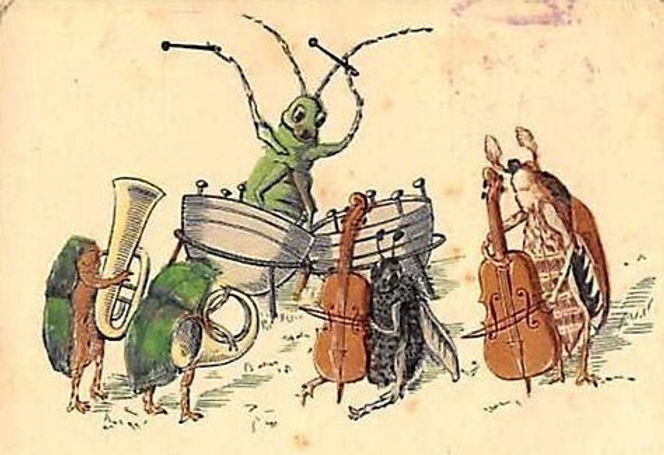




WELCOME TO An Entertainment Site for Scottish Country Dancers - Enjoy the curated selection of theme-related dances for celebrations and holidays, or find a dance associated with a special calendar day, or EVEN your own birthday!
July's Full Moon
Jul 21
Other Scottish Country Dances for this Day
Today's Musings, History & Folklore
“Crickets are the harbingers of good luck and good fortune."
Chirp! Chirp! In folklore, crickets are often seen as symbols of good luck and household guardians. Their presence in a home was believed to bring prosperity and protection to the inhabitants. And crickets on a full moon marks an even luckier night for dancing, especially if you have the crickets set the tempo of this fun and easy reel! The July moon, often referred to as the Buck Moon in various traditions, holds special significance in Celtic culture. In the Celtic lunar calendar. The Celtic tree calendar, also known as the Beth-Luis-Nion calendar, assigns trees to different periods throughout the year, each symbolizing various aspects of nature and life. This July, the tree associated with July 8 to August 4 is the "Tinne," which represents the holly tree. The holly is known for its resilience and protective qualities, often symbolizing defense and overcoming challenges. The Celtic name for the July moon is the "Coch Goleuni" or "Mead Moon," reflecting the time when meadows are in full bloom and traditionally associated with the brewing of mead from the summer's honey harvest. That's definitely something to chirp about! 🦗 🦗 🦗 🌕
Crickets by Moonlight
Crickets, the nocturnal musicians of the insect world, offer more than just a soothing summer serenade; they provide a natural thermometer. The rate at which crickets chirp is closely tied to the ambient temperature. This phenomenon, known as Dolbear's Law, states that by counting the number of chirps produced in a specific time period and applying a simple formula, one can estimate the temperature in degrees Fahrenheit. As the temperature rises, crickets chirp faster, their muscles more agile in the warmth. Conversely, cooler temperatures slow their rhythm, resulting in fewer chirps. Thus, the cricket's song, a staple of warm evenings, doubles as a subtle yet effective indicator of the night’s chill or warmth, connecting us more intimately with the natural world.
A good rule of thumb for estimating temperature using cricket chirps involves Dolbear's Law. For Fahrenheit, the formula is straightforward:
Count the number of chirps in 14 seconds.
Add 40 to this number.
The result is the approximate temperature in degrees Fahrenheit.
For example, if you count 30 chirps in 14 seconds: 30 chirps + 40 = 70°F
To convert this to Celsius:
Count the number of chirps in 25 seconds.
Divide the number of chirps by 3.
Add 4 to this number.
The result is the approximate temperature in degrees Celsius.
For example, if you count 48 chirps in 25 seconds: (48 chirps / 3) + 4 = 20°C.
For more on the relationship between temperature and cricket song, click the most famous of literary crickets, Jiminy Cricket, from Pinocchio!
Click the dance cribs or description below to link to a printable version of the dance!



